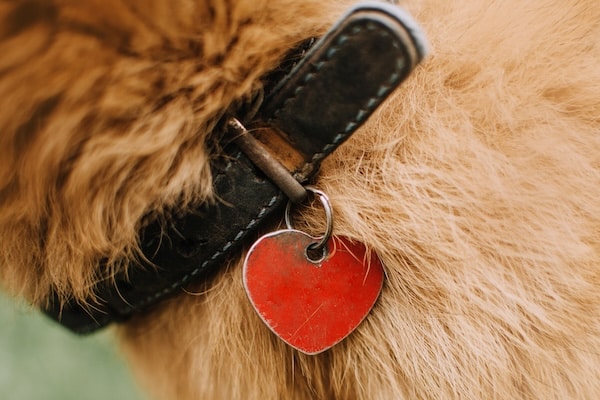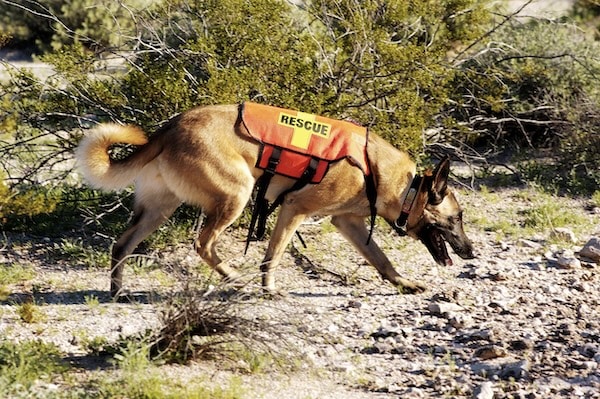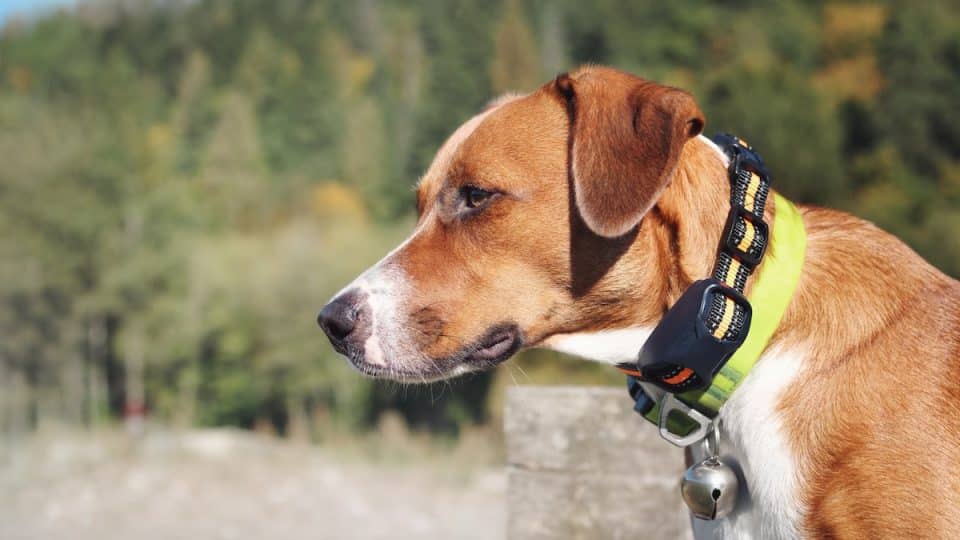- This post contains affiliate links. Read more here.
- Not a substitute for professional veterinary help.
Losing a dog is every pet parent’s nightmare, and it can happen when you least expect it. Don’t worry—the right tools can help you act quickly or prevent your pup from going missing in the first place.
We’ve rounded up a list of proactive solutions like GPS trackers and microchips, as well as post-escape tools that can help if you ever lose your dog. We’ll also highlight the best equipment for different environments, whether you’re in an urban area or more remote locations.
To guide us, we’ve tapped into the expertise of Leslie Poole, Executive Director of lost and found pet database Pet FBI, to share the best ways to connect with, track, and find your lost pup quickly.
Proactive Tools
To keep your dog safe, start with proactive measures to ensure you can quickly find them if they get lost. Here are some effective tools and tactics to help you feel more prepared and at ease.
GPS trackers
GPS trackers provide real-time location tracking, which is essential if your dog ever escapes. These devices typically attach to your dog’s collar and rely on cell towers to ping the location of your pet. The information is then relayed back to you via phone app.
Popular options include:
- Whistle GO Explore—a health tracker and GPS in one, designed as a collar attachment with an app
- Tractive LTE GPS—a practical GPS tracker with fewer bells and whistles but good value, plus some fitness tracking
- Fi Smart Dog Collar—a sleek collar with a low profile and GPS tracking capabilities
All three of these trackers offer live tracking and location history, activity monitoring, and alerts when your dog leaves a designated area.
If the price of a subscription or the threat of having to regularly charge a GPS device seem daunting, pet parents can also consider an Apple AirTag. They’re not a true dog GPS device, but they’re a popular budget pick in urban areas with lots of foot traffic.
Microchips
Microchipping is a highly effective, permanent identification method that works well as a backup if your dog’s collar or ID tags are lost. Implanted by a vet, a microchip carries a unique ID number registered to your contact information. If your dog is brought to a shelter or vet, they can scan the chip and contact you.
While microchips don’t track real-time location, they serve as a reliable secondary ID. Most shelters and rescues scan lost pets for microchips, so make sure your contact information is always up to date in the microchip registry.
Below are a few microchip registration services:
ID tags
Traditional dog ID tags remain one of the simplest and most effective ways to reunite lost pets with their owners. Unlike microchips, which require a scanner, an ID tag is visible and easy to read. They provide a quick way for someone to contact you if they’ve found your dog.
You can find dog ID tags at most pet stores, where they often have engraving kiosks for quick customization. Online retailers like Amazon, Etsy, and Chewy also offer a variety of tags in different styles, materials, and sizes.
Smart pet ID tags (like the Pawscout Smart Tag and ByteTag) go beyond traditional tags and use QR codes that can be scanned by anyone who finds your dog, providing instant access to your contact details.

Ksenia Raykova via iStock
Yard security tools
Securing your yard is essential for preventing escapes, especially for dogs prone to exploring. A good fence that is at least six feet tall can deter most dogs from jumping out, and dog-proof gate latches add an extra layer of security, making sure gates don’t accidentally swing open.
To prevent digging, consider installing an underground barrier, such as dig-proof mesh or gravel-filled trenches, along the fence line.
“Regularly check your fences and gates for any gaps or weaknesses,” recommends Poole.
Post-Escape Tools
When your dog is already on the loose, having immediate access to the right tools and tactics can make all the difference in bringing them home. Here’s a breakdown of useful apps, community networks, and tools that can help you find your lost dog.
Flyers and posters
“Flyers and signs are the number one way that lost dogs are reunited,” says Poole.
Create, print, and distribute flyers that include a photo of your dog, your contact information, and any other relevant details. Place these door to door in the area where your dog was lost, especially high-traffic areas like grocery stores, laundromats, vet offices, local shelters, and pet stores.
Platforms that offer free, customizable, and printable lost dog flyer templates include:
Lost pet finder apps
Lost pet finder apps allow you to quickly post alerts in your area, reaching a network of nearby pet parents, shelters, volunteers, and Facebook pages. It’s like an AMBER Alert for lost pets. With these apps, you can upload a photo and description of your dog to help others identify them.
Social media and community alerts
Local community groups on social media platforms can alert nearby neighbors to keep an eye out for your dog. For example, many towns have dedicated Facebook groups for lost pets, and platforms like Nextdoor allow you to post directly to people in your immediate vicinity. Include a recent photo of your dog and any known information about where they were last seen to increase the chances of someone spotting them.
Below are a few other online resources to post about your missing dog:
“Once your Pet FBI report has been entered, your listing will be visible on the Pet FBI website and will be shared in your area,” says Poole. “You will also receive email alerts of potential matches in your area.”

Ksenia Raykova via iStock via iStock
Scent and feeding stations
Set up a scent and feeding station using items with your or your dog’s familiar scent, like unwashed clothing or their bed, to attract them back to a specific area. Try setting up food and water alongside the scent items to lure your dog into the area.
If your dog is trained to respond to a whistle, you can try to grab your dog’s attention that way as well. Dogs can hear high-frequency dog whistles from long distances, and these whistles can cut through background noise. However, they’re most useful if you’ve trained your dog to associate the whistle with a positive behavior or recall cue.
The Best Tools for Different Environments
The most effective tools for finding your lost dog might depend on the specific area where they went missing. Whether your dog is roaming a wooded path or scoping out city streets, we’ve broken down the best tactics to find your pup in different environments,
In the woods
In wooded or rural areas, dogs often travel long distances in a short amount of time. If your dog has only been missing for a few hours, a tracking dog might be able to follow their scent trail.
Tracking dogs typically require an item that carries the lost dog’s smell, like a favorite blanket or toy. Their success rate is highest when they begin within hours of the pet going missing, as fresh scent trails fade fast.
In rural areas, you should also consider going door to door with flyers, as people in these areas may assume a dog is a stray rather than a lost pet.
In the city
If your dog went missing in a high-traffic area, acting quickly with social media alerts on platforms like Facebook and Nextdoor can help you reach large audiences fast.
Placing large signs in the ground at intersections is also effective.
“They are inexpensive and can accomplish a lot with little effort,” says Poole. “Be sure your phone number is clear and legible, and include a recent photo of your dog.”
In neighborhoods
In a suburban area, neighbors’ doorbell cameras can capture footage of your dog wandering nearby, helping to pinpoint their location. Ask your neighbors to check recent footage for sightings of your dog.
Lost pet recovery platforms such as PawBoost and PetFBI.org can also help you notify local residents that your dog is missing.
In the dark
For nighttime searches, you can set up infrared trail cameras where your dog was last seen.
“Trail cameras can help monitor lost dog behavior at night and give you the opportunity to come up with an effective strategy to catch the dog,” adds Poole.



